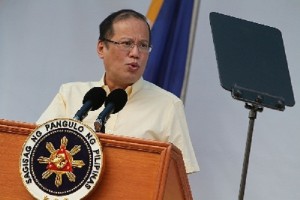The Aquino administration said the Philippines was up for a “promising future” that investors should take advantage of, saying there was a good chance the economy would grow more than 7 percent a year for at least 10 years after 2015.
On top of the country’s favorable economic fundamentals, the administration said the so-called “demographic window” that the Philippines would enjoy by 2015 could make the country a good investment destination.
“A promising future lies ahead,” the government said in its latest economic presentation distributed online to foreign sub scribers, which included businessmen, bankers and economists.
The “demographic window” is the period when the bulk of an economy’s population is of working age. In particular, it is the time when the proportion of the population aged 15 years old and younger falls below 30 percent and when the proportion of the population aged at least 65 years old drops to less than 15 percent.
Such a period should be enticing to businesses because it is when labor supply and income-earning consumers are abundant and an economy becomes more productive.
The Aquino administration said the demographic window would add icing to the cake for investors, citing the favorable macroeconomic indicators, including low inflation, sustained economic growth, a healthy banking sector, and strong remittances from overseas Filipinos that help fuel household consumption.
Citing a study by the United Nations, the government said the Philippines would follow the lead of strong Asian economies that previously entered the demographic window.
“The Philippines is the last major Asian economy to benefit from this demographic dividend, which is typically associated with accelerated economic growth,” the government said.
The country is expected to enjoy a robust growth rate of more than 7 percent over the long term starting 2015, saying some Asian countries, led by Japan, Hong Kong, Singapore, South Korea and China, experienced fast growth rates in the long term following their entry to the demographic window.
Japan entered the demographic window in 1965, Hong Kong and Singapore in 1980, South Korea in 1985, China in 1990 and Thailand in 1995.
Other neighboring countries have entered this window fairly recently. Indonesia and Vietnam did so in 2005, and Malaysia and India in 2010.
The average economic growth rate of selected countries for 10 years following their entry to the demographic window was 7.3 percent, the government said.
The Aquino administration aims to woo more long-term foreign investors into the country in the belief that investments from abroad were necessary to help create more jobs and reduce poverty.
The Philippines continues to lag behind other emerging Asian economies in terms of cornering foreign direct investments (FDIs).
Documents from the Bangko Sentral ng Pilipinas showed that the net inflow of FDIs amounted to $844 million in the first five months of the year. This was up by about 10 percent from $766 million in the same period last year, but was one of the smallest among emerging Asian economies.


